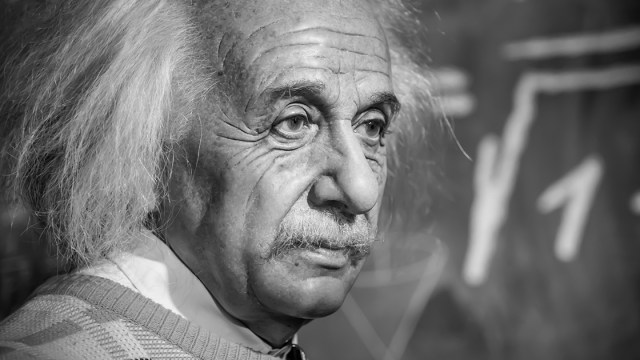LIGO-VIRGO Detects The First Three-Detector Gravitational Wave

Three eyes are so much better than two. Here’s why.
“Einstein’s gravitational theory, which is said to be the greatest single achievement of theoretical physics, resulted in beautiful relations connecting gravitational phenomena with the geometry of space; this was an exciting idea.” –Richard Feynman
It’s been less than two years since the LIGO collaboration detected their very first direct gravitational wave event, caused by the merger of two black holes over a billion light years away. Since then, LIGO’s detected additional mergers: of closer black holes, of signals lasting for a longer time, and of black holes even less massive than the first event. But earlier this year, the twin detectors in Hanford, WA and Livingston, LA were joined by a third interferometer an enormous distance away: the VIRGO detector in Italy. On August 14th, the first signal with all three interferometers running completed its journey from across the Universe to arrive at Earth, where it was detected in each one. With three working detectors observing the Universe simultaneously, we can now pinpoint the locations of these sources as never before.
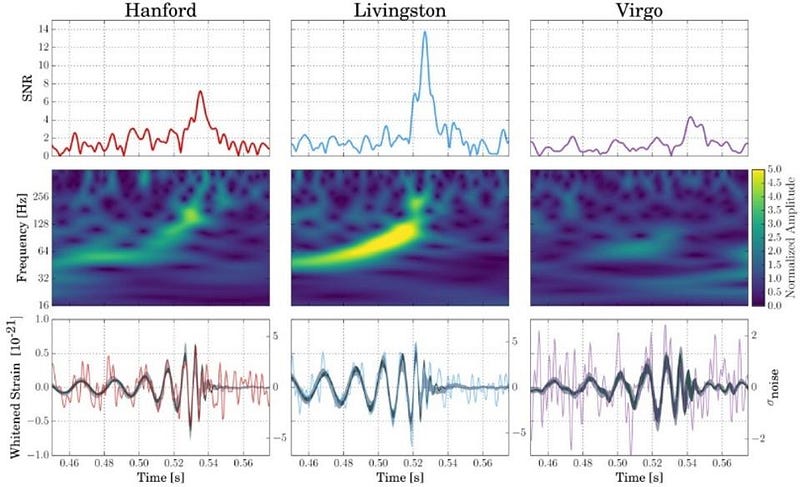
When you have a signal appearing in one detector, you can gain a rough estimate of its distance from you (with uncertainties), but with no information about its direction. A second detector not only gives another distance estimate, but the time difference between the two signals gives you some information about distance, allowing you to restrict yourself to an “arc” on the sky. But a third detector, with a third time difference, allows you to pinpoint a single point, albeit with significant uncertainties. This is where the word “triangulation” comes from, since you need three detectors to pinpoint a location-of-origin. That’s exactly what VIRGO was able to give.
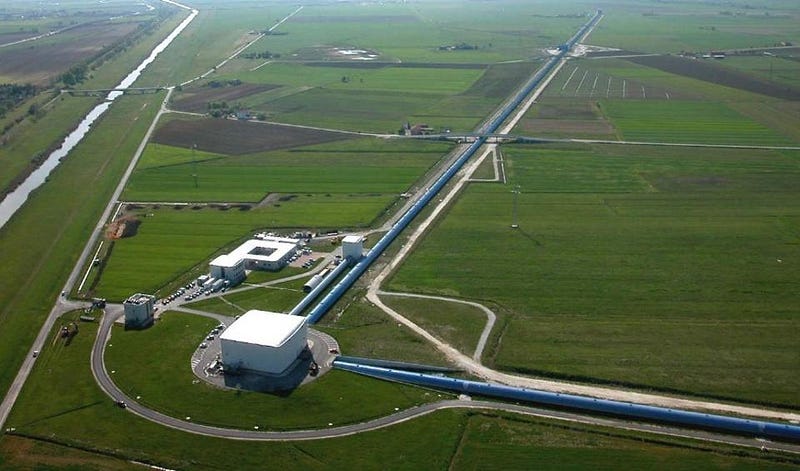
Very impressively, the signal in the VIRGO detector arrived a mere 6 milliseconds after the signals observed in the LIGO detectors. The very long baselines between these detectors, with LIGO in the USA and VIRGO on an entirely different continent, across an ocean, allowed for a narrowing-down of the signal’s location as never before.
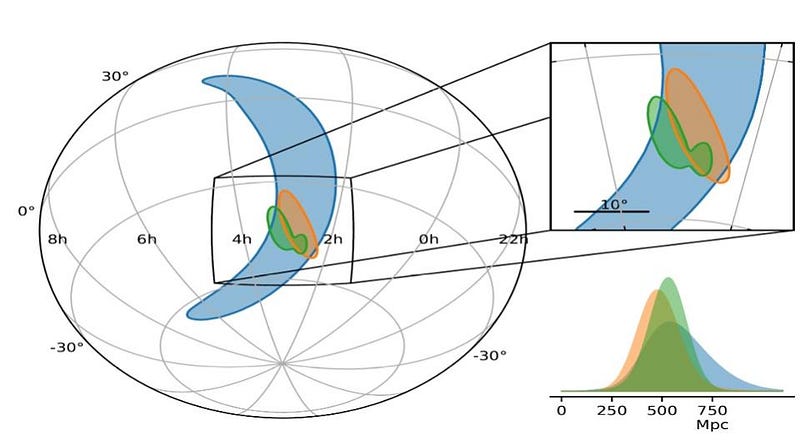
This provides the first opportunity for the measurement of a three-dimensional gravitational wave polarization, where space stretches and contracts in two perpendicular directions. And with the three-detector network, they were, for the first time, able to confirm this aspect of gravitational radiation. The agreement with General Relativity is, as you may expect, absolutely perfect.
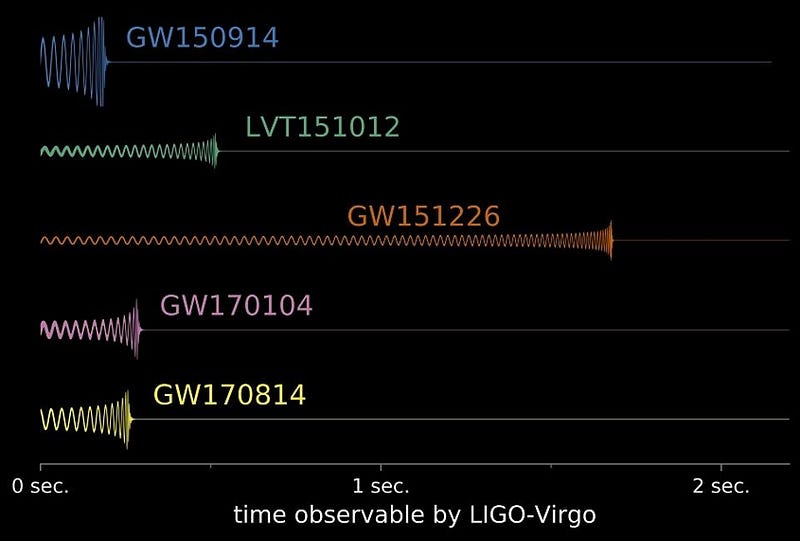
The speed of the signal, the consistency between all three detectors, and the amplitude of the strain on the apparatus tells us what the masses, periods, and properties of the inspiraling pair of black holes are. These first detections are absolutely incredible, but the additional information that you get from position is what will transform gravitational wave observations from a new way of observing a Universe to a way that integrates with the electromagnetic sky. Our telescopes are not good enough over the entire sky to view an incredibly large region, like those we were able to narrow-down the signals from previous events to. But if you can know, rapidly, where that gravitational wave signal originated from, you can all of a sudden look for a bona fide optical counterpart.
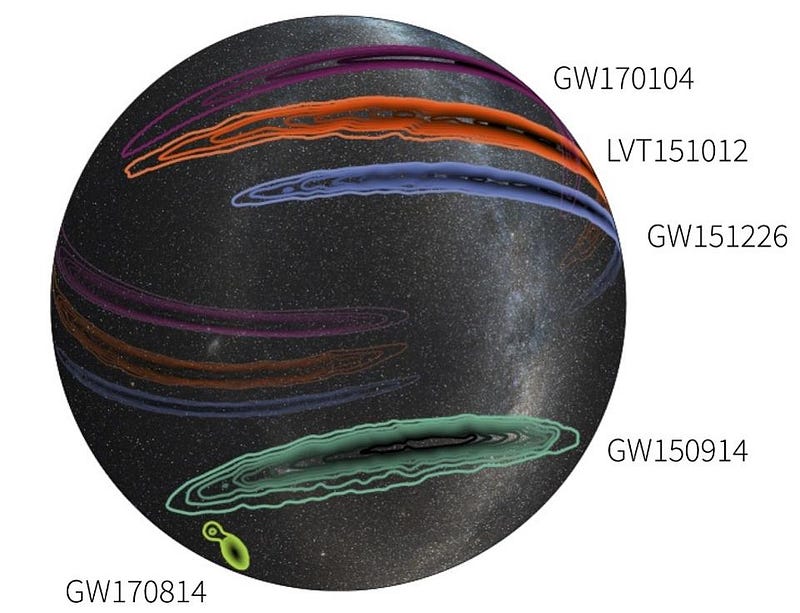
As LIGO and VIRGO improve, the uncertainties on these measurements will go down, meaning the region-of-sky where these gravitational waves were generated will decrease in size and be identified more quickly, enabling a follow-up more quickly with telescopes like Hubble, Fermi, and in the future, James Webb. There are a huge number of questions associated with these mergers that have not yet been answered:
- Do mergers of black holes involve electromagnetic emissions from accretion disks?
- Is there an afterglow of the merger, as there are for gamma-ray bursts?
- Is any matter heated up or ejected, and if so, to what degree and magnitude?
- What are the timescales of the aftermath or precursors of the merger?
As more detectors come online (like KAGRA in Japan or the next LIGO detector in India), and as sensitivity improves, we can not only expect to see mergers more accurately, but we can start to see them earlier in time, with greater frequency, and for black holes of lower masses.
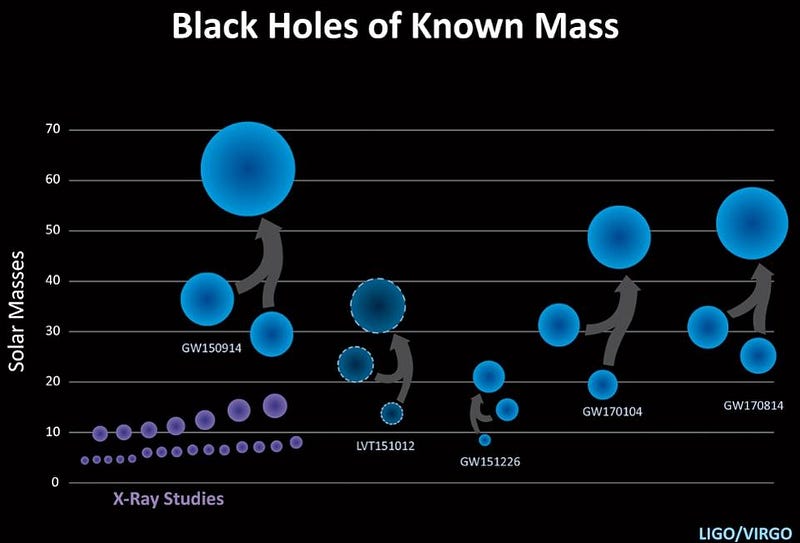
This type of new knowledge can serve not only to enhance what we know about how the Universe works, but can be a source of inspiration for what’s possible when humanity, across the globe and across observatories, works together for the benefit of all of us to achieve a greater understanding of the Universe. Today, the publication and the announcement is official: we’ve now seen four binary black hole mergers, and the first one in three detectors at once, pinpointing its location and measuring a gravitational wave’s 3D polarization for the first time. As time goes on, we can expect faster results, better signals, and increased numbers of events across the mass spectrum. A new kind of astronomy is upon us, and we’ll never view the Universe in the same way again.
Ethan Siegel is the author of Beyond the Galaxy and Treknology. You can pre-order his third book, currently in development: the Encyclopaedia Cosmologica.





